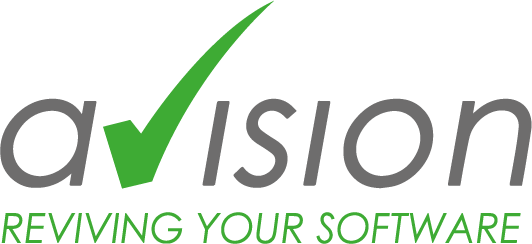The concept of zero cost transformation promises companies a cost-neutral modernization of their legacy software. Can this really work? Yes, says Avision – if the framework conditions are right.
The offer sounds extremely tempting. IT service providers promise companies a free modernization of their legacy software with the zero-cost transformation approach. The idea behind it: If a company has a legacy application in use, it has planned a fixed annual budget for its maintenance. Now the company hands over maintenance to the IT service provider for an agreed period of time and pays them this budget as a fixed annual lump sum. The service provider not only takes over the maintenance, but also modernizes the software.
And this is how this model pays off: on the one hand, the service provider can usually maintain the software more efficiently than the company itself. On the other hand, the software requires significantly less maintenance as a result of the modernization. After modernization, the service provider therefore has to spend significantly less on maintenance than is actually paid for by the flat rate. These differences are large enough that the service provider can not only cover its expenses for the modernization, but also generate the necessary profit. The company also benefits – twice over. Not only does it get back software that has been modernized free of charge, but also software that requires significantly less maintenance than in the past.
So much for the theory. But does this approach also work in practice? Yes, says IT service provider Avision, which specializes in software revival. However, the framework conditions have to be right:
- The contracts must be long-term enough for the service provider to operate economically. Otherwise, there is a risk that they will neglect quality for economic reasons and carry out a modernization that is not sustainable – for example, by leaving components in the legacy software that will no longer be supported by their manufacturer shortly after their contract with the company expires.
- Zero cost transformation is only worthwhile for the company when it comes to software that has a large investment backlog and therefore causes high maintenance costs. This may be the case, for example, if it still contains functionalities that are no longer needed.
- The company and the IT service provider make a long-term commitment to each other. This requires a high level of mutual trust. Ideally, the company should award the contract to a service provider with whom it has been working successfully for some time. If it is a new partner, the company should make extensive enquiries about them and obtain references.
- Trust is good, control is better. The company should have the opportunity to make concrete specifications and check the quality of the work. However, the prerequisite for this is that the company itself still has experts for the legacy software who are able to assess the service provider’s work professionally.
“Zero Cost Transformation is a very innovative approach to software modernization projects for companies and public authorities,” says Nadine Riederer, Managing Director at Avision. “If the framework conditions are right, they can benefit considerably. This is especially true if they can’t or don’t want to raise the required amount for the modernization all at once, because with zero cost transformation, the service provider basically advances this amount to them.”
This press release is also available at www.pr-com.de/de/avision.
Press contact
Avision GmbH
Christina Karl
Marketing
Bajuwarenring 14
D-82041 Oberhaching
Tel. +49-89-623037-967
christina.karl@avision-it.de
PR-COM GmbH
Melissa Gemmrich
Sendlinger-Tor-Platz 6
D-80336 München
Tel. +49-89-59997-759
melissa.gemmrich@pr-com.de



